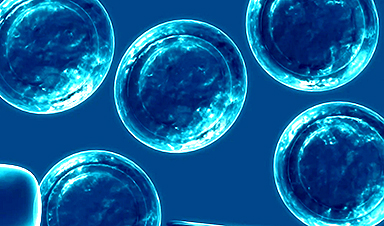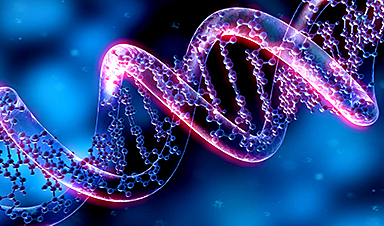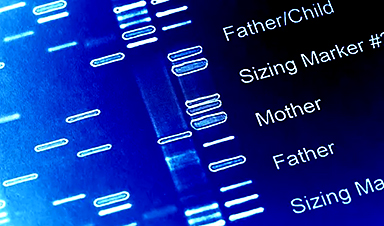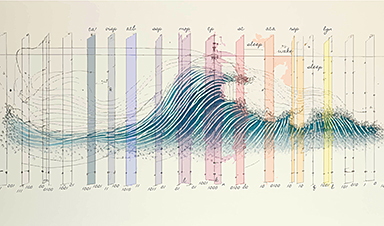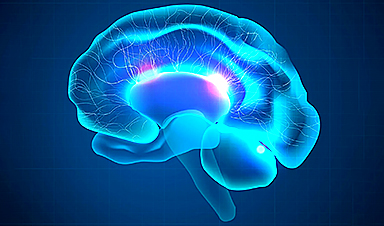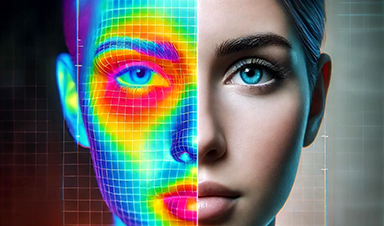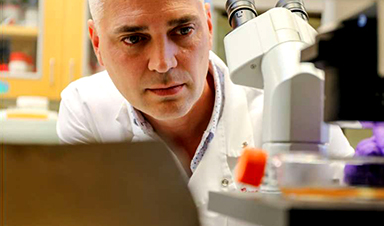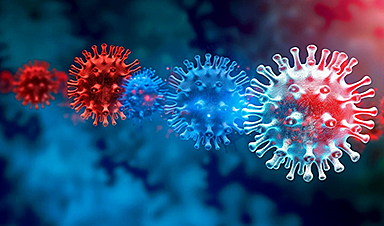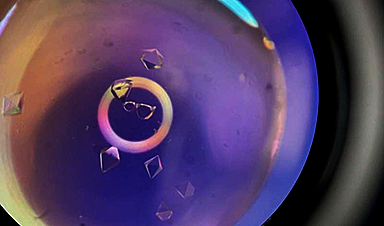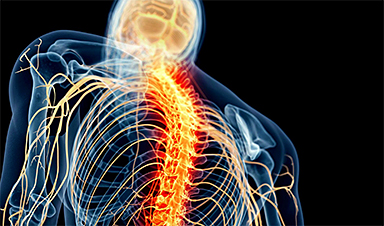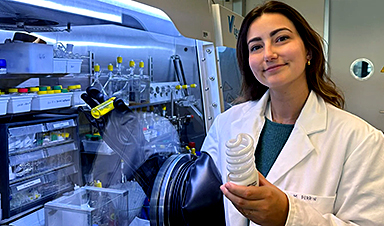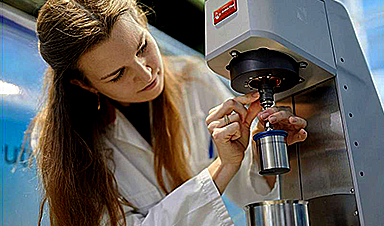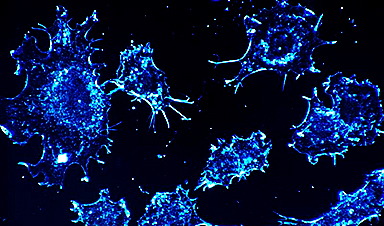Hydrogels have gained widespread recognition and utilization in biomedical engineering, with their applications dating back to the 1960s when they were first used in contact lens production.
Hydrogels are distinguished from other biomaterials in biomedical applications because of their remarkable flexibility and versatility. Owing to these advantageous properties, they find applications across a wide spectrum, ranging from industrial to biological applications.2
A Brief Overview of the Hydrogel Structure and Properties
Hydrogels are characterized by their hydrophilic nature and 3D network structure, possessing the unique ability to absorb significant amounts of water or biological fluids. This feature makes them ideal candidates for various biomedical applications, including biosensors, drug delivery systems, and carriers or scaffolds for cells in tissue engineering.3
In biomedical applications, the similarity between the physical attributes of hydrogels and human tissues, along with their tunable physiochemical properties, makes them a popular choice. They also offer the potential for functionalization.
Common applications of hydrogels include medical patches, tissue sealants, drug carriers, and flexible electronic devices.4
Hydrogel properties, including swelling and deswelling rates, matrix stiffness, degradability, and mesh size, can be adjusted to suit specific biomedical applications. This adjustment is achieved by altering the hydrophilic-hydrophobic ratios and reaction rates, making them popular for various biomedical purposes.5
Traditionally, hydrogels have been made using a controlled batch reactor chamber manufacturing process. This conventional process involves combining reactants in a reactor where the mixture undergoes thorough blending at a specified stir rate and temperature.
Once the chemicals form a slurry, they are combined with other pre-prepared solutions under specified conditions. This process yields a hydrogel with the high-strength properties required for biomedical applications.6
Additive manufacturing techniques, such as bio-ink-based 3D printing, have revolutionized the production of hydrogels. They significantly reduce manufacturing time and allow for the precise control of structural attributes.
Applications of Hydrogels in Biomedicine
In the biomedical field, hydrogels are a popular choice for drug delivery systems, wearable sensors, the manufacturing of tissue scaffolds, and anti-microbial bandages and wound dressings.
In cell culture, 3D cell cultures offer a valuable platform for cell growth in vitro, enabling growth in all directions. Unlike the 2D culture system, 3D cultures facilitate a better understanding of in vivo cell behavior as cells develop into a 3D structure akin to living tissue.
This is achieved by culturing cells on a 3D scaffold, mimicking the natural 3D cell structures found in vivo, where cells are embedded in the extracellular matrix (ECM) and form a 3D network.
Hydrogels possess a 3D structure and a hydrophilic polymer network capable of absorbing water and biological fluids, allowing them to construct soft and wet 3D structures.7 Natural hydrogels, in particular, exhibit good biocompatibility, contain endogenous factors, and possess viscoelasticity and fibrils similar to the ECM.
Many natural materials, such as chitosan, are used to develop hydrogels, but a very widely used substance is Hyaluronic acid (HA). HA is a natural hydrogel material and a major component of the ECM. This molecule is found in different essential tissues, such as skin and cartilage.
Another natural source is fibrin, with fibrin hydrogel essential to ECM development. Fibrin hydrogel has various customizable properties that can be optimized for modern tissue engineering and stem cell cultivation.8
Smart hydrogels, made from naturally occurring polymeric materials, are also being investigated for use in targeted cell delivery. Their responses are highly dependent on external stimuli, promoting their use in the development of targeted drugs and intricately controlled release of medicinal substances, especially cancer drugs, without injecting any substance into the human veins.9
Self-healing hydrogels (SHHs) have recently gained attention, as their properties closely resemble human muscles and natural tissues. The innate ability of natural tissues to self-heal is fascinating, extending their longevity while enhancing strength and durability.
The striking similarities between self-healing hydrogels and natural tissues make them suitable for real-time applications in diverse areas such as soft robotics, drug delivery, and carrier systems for transporting various molecules within cells.10
Wound healing is a multifaceted and complex process involving the repair of damaged tissue layers and cellular structures. SHH compounds have the potential to reduce the frequency of dressing changes and, therefore, any unnecessary discomfort for patients. They also fulfill the requirements for surgical debridement, especially for burn patients.11
Artificial Intelligence-Based Innovation in Hydrogel Design and Optimization
Previously, the development of hydrogels followed a series of lengthy experiments, and their optimization could take years, leading to significant financial losses and time wastage.
Recently, the application of computer simulations and modern technologies has revolutionized material science and engineering. The use of artificial Intelligence (AI) in the design and development of modern hydrogels has boosted the industrialization of these substances.
AI-energized hydrogel design utilizes machine learning (ML) algorithms to analyze extensive datasets and pinpoint the most effective combinations of polymers, cross-linking agents, and additives for producing hydrogels with precise properties.
This approach enables researchers to rapidly design and optimize hydrogels tailored to specific requirements, including mechanical strength, porosity, biocompatibility, and drug release profiles.
With the aid of AI, hydrogels have seen enhanced applications in tissue engineering, including drug delivery, bio-inks for advanced manufacturing, tissue repair, and biosensors.12
The advancement of AI-energized multifunctional hydrogel products is still in its early phases. Implementing AI necessitates extensive datasets for training, validation, and testing.
For example, in the development of hydrogel drug delivery systems, it is crucial to adjust input parameters effectively and possess comprehensive data on hydrogel release outcomes.
Access to ample experimental data, encompassing both input parameters and release outcomes, would greatly aid in refining predictive models and understanding the underlying relationships.
Latest Development in Hydrogel Based Solutions for Cardiac Treatment
In a recent development, scientists at the University of Waterloo have introduced a novel hydrogel designed to repair injured heart tissue and enhance cancer therapies.
This synthetic substance is crafted from cellulose nanocrystals extracted from wood pulp. It is engineered to mimic the fibrous nanostructures and characteristics of human tissues, reproducing the distinctive biomechanical attributes of natural tissues.
The same department is also leading the development of similar biomimetic hydrogels suitable for drug delivery and regenerative medicine applications, focusing on creating injectable formulations.
Hydrogels hold tremendous potential in the medical field due to their rapid and effective bonding capabilities. These gel-like materials, which can be tailored to have varying levels of stiffness, enable the mimicry of the mechanical properties of specific tissues.
To further improve the efficiency of hydrogels, it is imperative to address cost challenges, develop sustainable production techniques, and integrate digital technologies.
References and Further Reading
[1] Xiao, Z. et al. (2022). Adhesion mechanism and application progress of hydrogels. European Polymer Journal. doi.org/10.1016/j.eurpolymj.2022.111277
[2] Mahmood, A. et al. (2022). Recent Progress in Biopolymer-Based Hydrogel Materials for Biomedical Applications. International Journal of Molecular Sciences. doi.org/10.3390/ijms23031415
[3] Li, W. et al. (2022). Bio‐inspired adhesive hydrogel for biomedicine—principles and design strategies. Smart Medicine. Available at: doi.org/10.1002/SMMD.20220024
[4] Hua, M. et al. (2021). Strong tough hydrogels via the synergy of freeze-casting and salting out. Nature. doi.org/10.1038/s41586-021-03212-z
[5] Liu, T. et al. (2021). Effect of freezing process on the microstructure of gelatin methacryloyl hydrogels. Frontiers in Bioengineering and Biotechnology. doi.org/10.3389/fbioe.2021.810155
[6] Ahmed, EM. (2015). Hydrogel: Preparation, characterization, and applications: A review. Journal of advanced research. doi.org/10.1016/j.jare.2013.07.006
[7] Park, Y., et al. (2022). Applications of Biomaterials in 3D Cell Culture and Contributions of 3D Cell Culture to Drug Development and Basic Biomedical Research. International Journal of Molecular Sciences. doi.org/10.3390/ijms22052491
[8] Heo, D., et al. (2019). Synergistic interplay between human MSCs and HUVECs in 3D spheroids laden in collagen/fibrin hydrogels for bone tissue engineering. Acta biomaterialia. doi.org/10.1016/j.actbio.2019.02.046
[9] Chung, T., et al. (2021). Developing photothermal-responsive and anti-oxidative silk/dopamine nanoparticles decorated with drugs which were incorporated into silk films as a depot-based drug delivery. International Journal of Biological Macromolecules. doi.org/10.1016/j.ijbiomac.2021.06.084
[10] Rumon M. et al. (2022). Self-Healing Hydrogels: Development, Biomedical Applications, and Challenges. Polymers. doi.org/10.3390/polym14214539
[11] Hasan, M., et al. (2021). Fabrication and characterization of chitosan-polyethylene glycol (Ch-PEG) based hydrogels and evaluation of their potency in rat skin wound model. International Journal of Biomaterials. doi.org/10.1155/2021/4877344
[12] Li, Z. et al. (2024). AI energized hydrogel design, optimization and application in biomedicine. Materials Today Bio. doi.org/10.1016/j.mtbio.2024.10101
News
The Silent Battle Within: How Your Organs Choose Between Mom and Dad’s Genes
Research reveals that selective expression of maternal or paternal X chromosomes varies by organ, driven by cellular competition. A new study published today (July 26) in Nature Genetics by the Lymphoid Development Group at the MRC [...]
Study identifies genes increasing risk of severe COVID-19
Whether or not a person becomes seriously ill with COVID-19 depends, among other things, on genetic factors. With this in mind, researchers from the University Hospital Bonn (UKB) and the University of Bonn, in [...]
Small regions of the brain can take micro-naps while the rest of the brain is awake and vice versa
Sleep and wake: They're totally distinct states of being that define the boundaries of our daily lives. For years, scientists have measured the difference between these instinctual brain processes by observing brain waves, with [...]
Redefining Consciousness: Small Regions of the Brain Can Take Micro-Naps While the Rest of the Brain Is Awake
The study broadly reveals how fast brain waves, previously overlooked, establish fundamental patterns of sleep and wakefulness. Scientists have developed a new method to analyze sleep and wake states by detecting ultra-fast neuronal activity [...]
AI Reveals Health Secrets Through Facial Temperature Mapping
Researchers have found that different facial temperatures correlate with chronic illnesses like diabetes and high blood pressure, and these can be detected using AI with thermal cameras. They highlight the potential of this technology [...]
Breakthrough in aging research: Blocking IL-11 extends lifespan and improves health in mice
In a recent study published in the journal Nature, a team of researchers used murine models and various pharmacological and genetic approaches to examine whether pro-inflammatory signaling involving interleukin (IL)-11, which activates signaling molecules such [...]
Promise for a universal influenza vaccine: Scientists validate theory using 1918 flu virus
New research led by Oregon Health & Science University reveals a promising approach to developing a universal influenza vaccine—a so-called "one and done" vaccine that confers lifetime immunity against an evolving virus. The study, [...]
New Projects Aim To Pioneer the Future of Neuroscience
One study will investigate the alterations in brain activity at the cellular level caused by psilocybin, the psychoactive substance found in “magic mushrooms.” How do neurons respond to the effects of magic mushrooms? What [...]
Decoding the Decline: Scientific Insights Into Long COVID’s Retreat
Research indicates a significant reduction in long COVID risk, largely due to vaccination and the virus’s evolution. The study analyzes data from over 441,000 veterans, showing lower rates of long COVID among vaccinated individuals compared [...]
Silicon Transformed: A Breakthrough in Laser Nanofabrication
A new method enables precise nanofabrication inside silicon using spatial light modulation and laser pulses, creating advanced nanostructures for potential use in electronics and photonics. Silicon, the cornerstone of modern electronics, photovoltaics, and photonics, [...]
Caught in the actinium: New research could help design better cancer treatments
The element actinium was first discovered at the turn of the 20th century, but even now, nearly 125 years later, researchers still don't have a good grasp on the metal's chemistry. That's because actinium [...]
Innovative Light-Controlled Drugs Could Revolutionize Neuropathic Pain Treatment
A team of researchers from the Institute for Bioengineering of Catalonia (IBEC) has developed light-activated derivatives of the anti-epileptic drug carbamazepine to treat neuropathic pain. Light can be harnessed to target drugs to specific [...]
Green Gold: Turning E-Waste Into a Treasure Trove of Rare Earth Metals
Scientists are developing a process inspired by nature that efficiently recovers europium from old fluorescent lamps. The approach could lead to the long-awaited recycling of rare earth metals. A small molecule that naturally serves [...]
Cambridge Study: AI Chatbots Have an “Empathy Gap,” and It Could Be Dangerous
A new study suggests a framework for “Child Safe AI” in response to recent incidents showing that many children perceive chatbots as quasi-human and reliable. A study has indicated that AI chatbots often exhibit [...]
Nanoparticle-based delivery system could offer treatment for diabetics with rare insulin allergy
Up to 3% of people with diabetes have an allergic reaction to insulin. A team at Forschungszentrum Jülich has now studied a method that could be used to deliver the active substance into the [...]
Nanorobot kills cancer cells in mice with hidden weapon
Researchers at Karolinska Institutet in Sweden have developed nanorobots that kill cancer cells in mice. The robot's weapon is hidden in a nanostructure and is exposed only in the tumor microenvironment, sparing healthy cells. [...]
